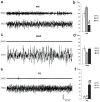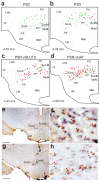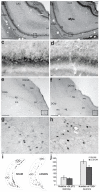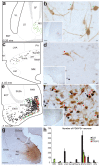Differential origin of the activation of dorsal and ventral dentate gyrus granule cells during paradoxical (REM) sleep in the rat
- PMID: 27539452
- PMCID: PMC5640786
- DOI: 10.1007/s00429-016-1289-7
Differential origin of the activation of dorsal and ventral dentate gyrus granule cells during paradoxical (REM) sleep in the rat
Abstract
We recently demonstrated that granule cells located in the dorsal dentate gyrus (dDG) are activated by neurons located in the lateral supramammillary nucleus (SumL) during paradoxical sleep (PS) hypersomnia. To determine whether these neurons are glutamatergic and/or GABAergic, we combined FOS immunostaining with in situ hybridization of vesicular glutamate transporter 2 (vGLUT2, a marker of glutamatergic neurons) or that of the vesicular GABA transporter (vGAT, a marker of GABAergic neurons) mRNA in rats displaying PS hypersomnia (PSR). We found that 84 and 76 % of the FOS+ SumL neurons in PSR rats expressed vGLUT2 and vGAT mRNA, respectively. Then, we examined vGLUT2 and FOS immunostaining in the dorsal and ventral DG of PSR rats with a neurochemical lesion of the Sum. In PSR-lesioned animals but not in sham animals, nearly all vGLUT2+ fibers and FOS+ neurons disappeared in the dDG, but not in the ventral DG (vDG). To identify the pathway (s) responsible (s) for the activation of the vDG during PS hypersomnia, we combined Fluorogold (FG) injection in the vDG of PSR rats with FOS staining. We found a large number of neurons FOS-FG+, specifically in the medial entorhinal cortex (ENTm). Altogether, our results suggest that SumL neurons with a unique dual glutamatergic and GABAergic phenotype are responsible for the activation of the dDG during PS hypersomnia, while vDG granule neurons are activated by ENTm cortical neurons. These results suggest differential mechanisms and functions for the activation of the dDG and the vDG granule cells during PS.
Keywords: Dentate gyrus; Entorhinal cortex; Hippocampus; REM sleep; Supramammillary nucleus.
Figures





References
-
- Jouvet M, Michel F, Courjon J. Sur un stade d’activité électrique cérébrale rapide au cours du sommeil physiologique CR Seances. Soc Biol. 1959;153:1024–1028.
Publication types
MeSH terms
Substances
LinkOut - more resources
Full Text Sources
Other Literature Sources

